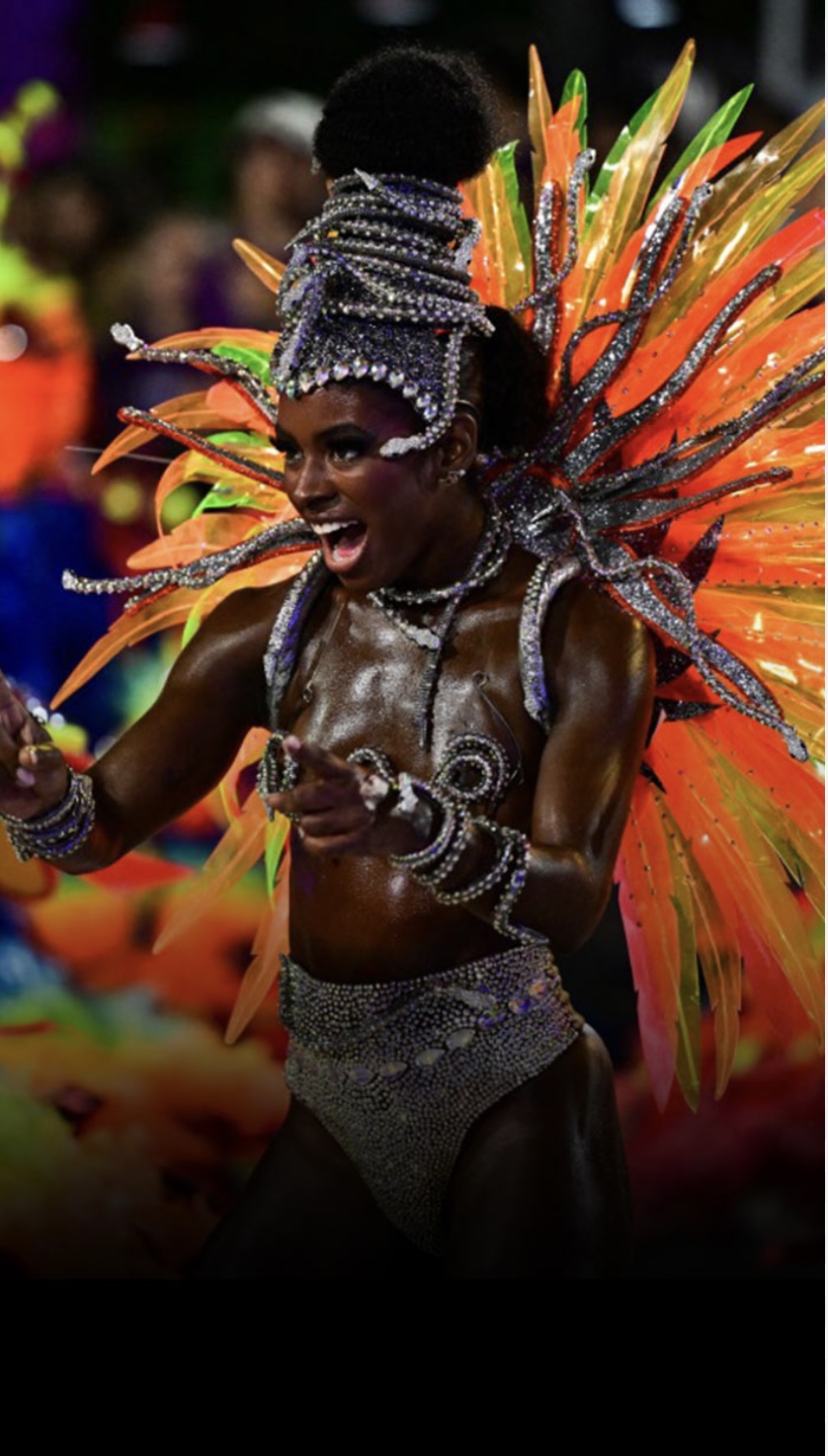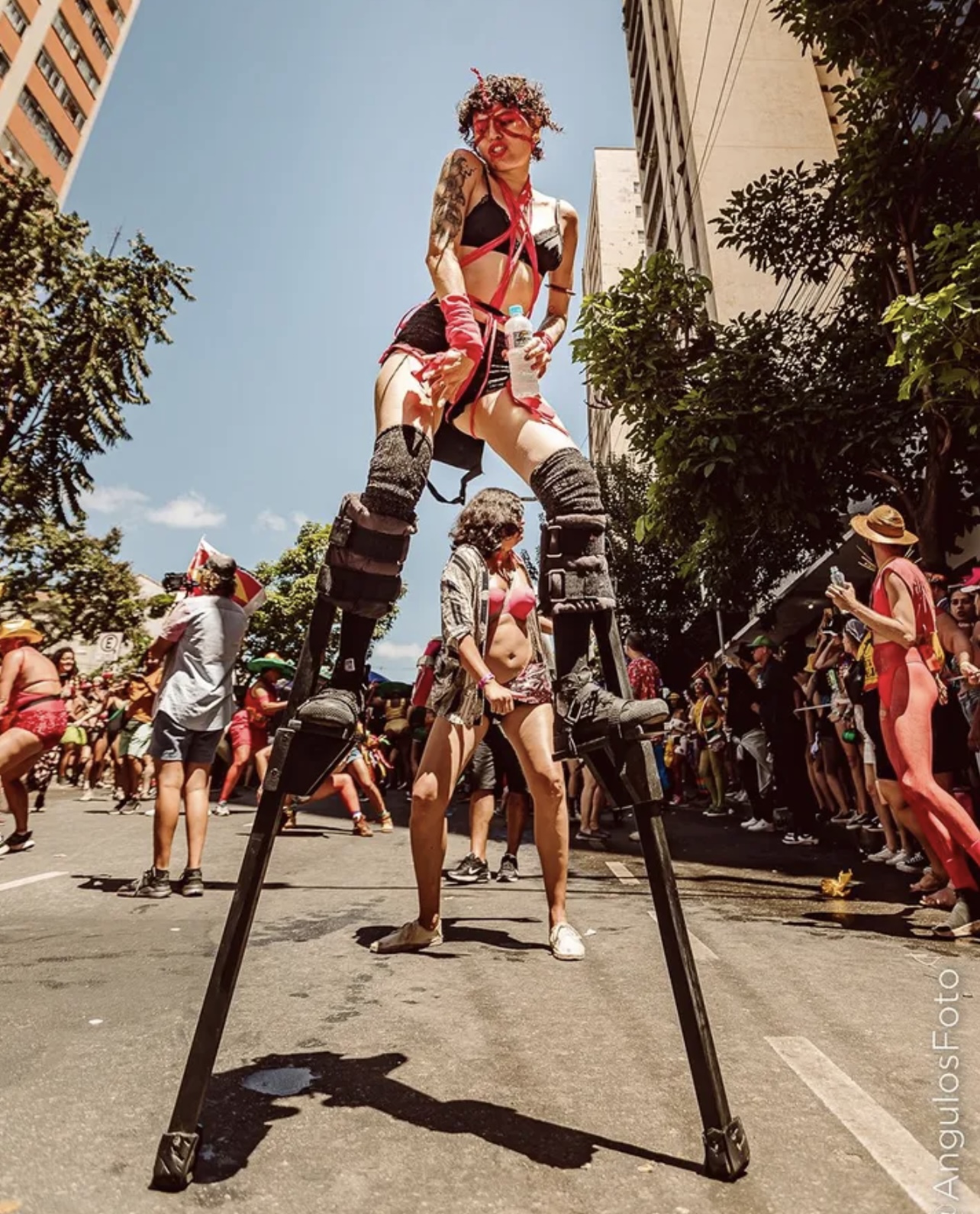Beyond Rio: The Hidden Carnival Gem of Belo Horizonte, Brazil
SAXS February 19, 2024In the weeks preceding Carnival, the shopping scene in Rio de Janeiro reaches a whole new level of excitement. The vibrant festivities magnetize crowds of both local and global tourists, all drawn in by the renowned parades and block parties that have put Brazil on the map. However, the significance of this celebration goes beyond mere enjoyment; it becomes an economic blessing for the country. The influx of tourists during Carnival injects millions of dollars into the economy, consequently creating tens of thousands of temporary job opportunities throughout the city.

Beyond Rio
In February, Rio de Janeiro is projected to achieve an unprecedented milestone, generating an astounding 5.3 billion reais (£846m; $1.06b) through activities linked to tourism. This year, the state government has made its most substantial investment ever in the preparations and festivities of the 2024 Carnival, amounting to an impressive 62.5 million reais (£10m; $12.5m). As a result of this significant infusion of capital, an unparalleled number of employment opportunities have been created, bolstering the city’s infrastructure to cater to the needs of tourists. Moreover, these developments are anticipated to pave the way for long-term social advancements within Rio de Janeiro.
The vibrant celebrations and subsequent influx of tourists in Rio de Janeiro serve as a crucial source of income for a significant portion of its residents. The investments made for the upcoming 2024 Carnival have had a remarkable impact, generating approximately 50,000 fresh employment opportunities, particularly benefiting socially vulnerable groups residing in low-income neighborhoods. These employment opportunities span across various roles within the samba schools, encompassing seamstresses, musicians, performers, and organizers.
In Brazil, full-time employees usually receive an additional month’s salary known as the “thirteenth salary” at the end of the year. However, for self-employed individuals and those working informally on the streets, the revenue generated during Carnival serves as a valuable substitute for this bonus. It not only provides them with a chance to settle their debts but also acts as an opportunity to save money, as mentioned by Oliveira, a street seller in Copacabana. This year, the official registration of street sellers who will be actively involved in the block parties and parades has reached an impressive figure of 15,000, a notable increase from the previous year’s 10,000.

The timing of investing in Carnival couldn’t be better. Brazil experienced a surge in international tourism last year, generating a staggering $6.9 billion (£5.5 billion) for its economy. This marked a 1.5% increase from the previous record set in 2014 when Brazil hosted the World Cup. With the country’s ambitious Tourism Plan aiming to reach $8.1 billion (£6.4 billion) by 2027, it is evident that the potential for growth in this sector is immense.
In Rio, the government has been actively investing in infrastructure, security, and mobility to attract more visitors. The city has made significant improvements to its largest international airport, increasing the number of flights and enhancing the overall experience for travelers. Additionally, there has been a notable increase in police presence in popular tourist areas, ensuring the safety of visitors.
During this year’s Carnival, Rio will deploy a strong force of over 12,000 military police officers, a 5% increase compared to the previous year. The aim is to counter Rio’s reputation for violent crime and create a more secure environment for tourists. This strategic move is expected to have a positive impact on the perception of the city and ultimately lead to a boost in tourism.
The consequences of Rio’s negative image are not to be underestimated. The National Confederation of Commerce (CNC) revealed that in 2023 alone, the state suffered a loss of 3.3 billion reais (£536 million; $660 million) in tourism revenue due to this perception. By actively addressing this issue and investing in security measures, Rio is taking a proactive approach to enhance its reputation and regain the trust of potential visitors.
Overall, the investment in Carnival comes at a crucial time for Brazil. With a booming tourism industry and the government’s commitment to improving infrastructure and security, the country is well-positioned to achieve its ambitious economic goals. By capitalizing on the opportunities presented by Carnival, Brazil can solidify its position as a premier tourist destination and continue to reap the benefits for years to come.

The cityof Belo Horizonte remains relatively unknown beyond the borders of Brazil. Despite its status as a state capital and the sixth-largest city in the country, this charming city, affectionately known as Beagá by locals, lacks the allure of picturesque beaches or captivating colonial architecture that would typically draw attention. Surprisingly, until recently, Belo Horizonte did not partake in Brazil’s highly anticipated carnival season.
Nevertheless, Belo Horizonte’s youthful Carnival has swiftly risen to become one of Brazil’s most celebrated events. This year’s Carnival, scheduled from January 27th to February 18th, with the peak festivities taking place from February 9th to 14th, is expected to attract a staggering 5.5 million attendees, surpassing the city’s resident population. Notably, renowned acts such as the international superstar Anitta will be gracing the stage for the first time, solidifying Beagá as Brazil’s newest and most exciting Carnival destination.
It is difficult to overstate the significance of Carnival in Brazil. While other countries also partake in the revelry leading up to Lent, nowhere else is it pursued with the same fervor as in Brazil. Furthermore, Carnival is not only a time for celebration but also a substantial economic driver. In 2023 alone, it contributed an astounding R$8,180 million (approximately €1.52 billion) to the Brazilian economy.
In the realm of Brazilian Carnival, Rio de Janeiro has long held the crown, captivating nearly half of the festivities and drawing in a majority of international tourists. Its Carnival has become renowned as the grandest and most extravagant in the world. Other coastal cities like Salvador and Recife also boast a strong Carnival tradition, while São Paulo, Brazil’s largest metropolis, has recently emerged as a significant Carnival destination.
However, this year, those in the know amongst Brazilians are flocking to Belo Horizonte. Constructed as a meticulously planned city 127 years ago, Belo Horizonte stands as the capital of Minas Gerais, a state famous for its culinary heritage and sugarcane spirits. The city itself has gained a reputation for its bohemian culture and relaxed atmosphere, but when it comes to Carnival, it is taken with utmost seriousness here. The streets come alive with the sounds of blocos, or street bands, starting as early as 5:00 am and carrying on until the early evening. This year, the number of blocos in Belo Horizonte will surpass that of Rio, and its Carnival is projected to infuse R$1bn (£160m) into the local economy.

Ironically, the city government has now intervened in the carnival, a move that not all blocos are comfortable with. To further exacerbate tensions, the state of Minas Gerais has allocated significant resources, investing in carnival infrastructure for the first time and spending over R$6m on nationwide advertising with the slogan, “Feel at home on the streets in Belo Horizonte.” Notably, this provocative campaign even infiltrated billboards within the Rio metro, potentially provoking residents there.
However, the newfound popularity of Belo Horizonte’s Carnival among trendy Brazilians cannot solely be attributed to shrewd advertising tactics. Gustavo Jreige, the esteemed host of the renowned LGBTQ+ party Festa VHS in São Paulo, typically spends Carnival in his hometown. Yet, this year, he is drawn to Beagá (Belo Horizonte) instead. Jreige explains that Belo Horizonte occupies a unique niche; it strikes a harmonious balance between being well-organized and yet retains an uncurated charm. Furthermore, it possesses a grandeur that has yet to be fully established, adding to its allure.
The cost of accommodations, food, and transportation in Belo Horizonte is significantly lower than in its more famous counterparts, making it an attractive option for budget-conscious travelers. The city offers a range of affordable hotels, guesthouses, and hostels, providing comfortable yet economical options for visitors.
Moreover, Belo Horizonte is known for its safety, which is another key factor contributing to its popularity. Unlike larger cities where tourists may feel overwhelmed or concerned about their well-being, Belo Horizonte maintains a welcoming and secure environment. The locals are known for their warmth and friendliness, making visitors feel at ease and ensuring a pleasant stay.
Despite its substantial population, Belo Horizonte manages to preserve a charming small-town ambiance. The city’s layout is compact and easily navigable, with walkable streets and well-connected public transportation systems. This allows visitors to explore the various neighborhoods and attractions effortlessly. Whether wandering through the picturesque parks, engaging with the local culture in the bustling markets, or savoring the culinary delights in cozy restaurants, Belo Horizonte offers a unique blend of urban vibrancy and a relaxed atmosphere.
The small-town vibe extends beyond the city center, as Belo Horizonte is surrounded by breathtaking natural landscapes. Just a short distance away, visitors can find themselves immersed in stunning mountains, lush green valleys, and cascading waterfalls. These natural wonders provide opportunities for outdoor activities such as hiking, biking, and exploring hidden trails, offering a refreshing escape from the urban hustle and bustle.
The history of Brazil carnival dates back centuries, intertwining with the country’s rich cultural heritage and vibrant traditions. This grand celebration has become a defining aspect of Brazilian culture, captivating the hearts of locals and attracting tourists from around the world.
The origins of Brazil carnival can be traced back to the European tradition of Lent, a period of fasting and reflection leading up to Easter. When Portuguese settlers arrived in Brazil in the 16th century, they brought with them their customs and religious practices. As a result, an adaptation of the European carnival celebrations emerged in Brazil, blending with the diverse influences of the indigenous peoples and Africans.
The African influence played a crucial role in shaping the unique character of Brazil carnival.
African traditions fused with European customs, creating a fusion of rhythms and movements that would eventually become the backbone of Brazil carnival. Africans introduced Samba, a lively and energetic dance, which quickly gained popularity among the masses. Samba became synonymous with the carnival, capturing the essence of the Brazilian spirit and serving as a powerful form of resistance against oppression.
In the late 19th century, Brazil witnessed a significant shift in the carnival’s dynamics. The introduction of organized parades and the establishment of samba schools transformed the carnival into a structured and competitive event. Samba schools are community-based organizations that bring together people from different neighborhoods to rehearse and prepare for the carnival parade.
These schools became the driving force behind Brazil carnival, with each one showcasing their unique themes, costumes, and choreography. The competition among samba schools grew fierce, with participants dedicating months of preparation to create extravagant floats and dazzling performances. The carnival parade transformed into a spectacle of color, music, and dance, captivating spectators from all walks of life.
Today, the Brazil carnival has become an iconic event, attracting millions of people to the streets of cities like Rio de Janeiro and Salvador. It is a celebration of Brazilian culture, unity, and diversity. The infectious rhythm of samba, the elaborate costumes, and the joyful atmosphere create an experience like no other.











